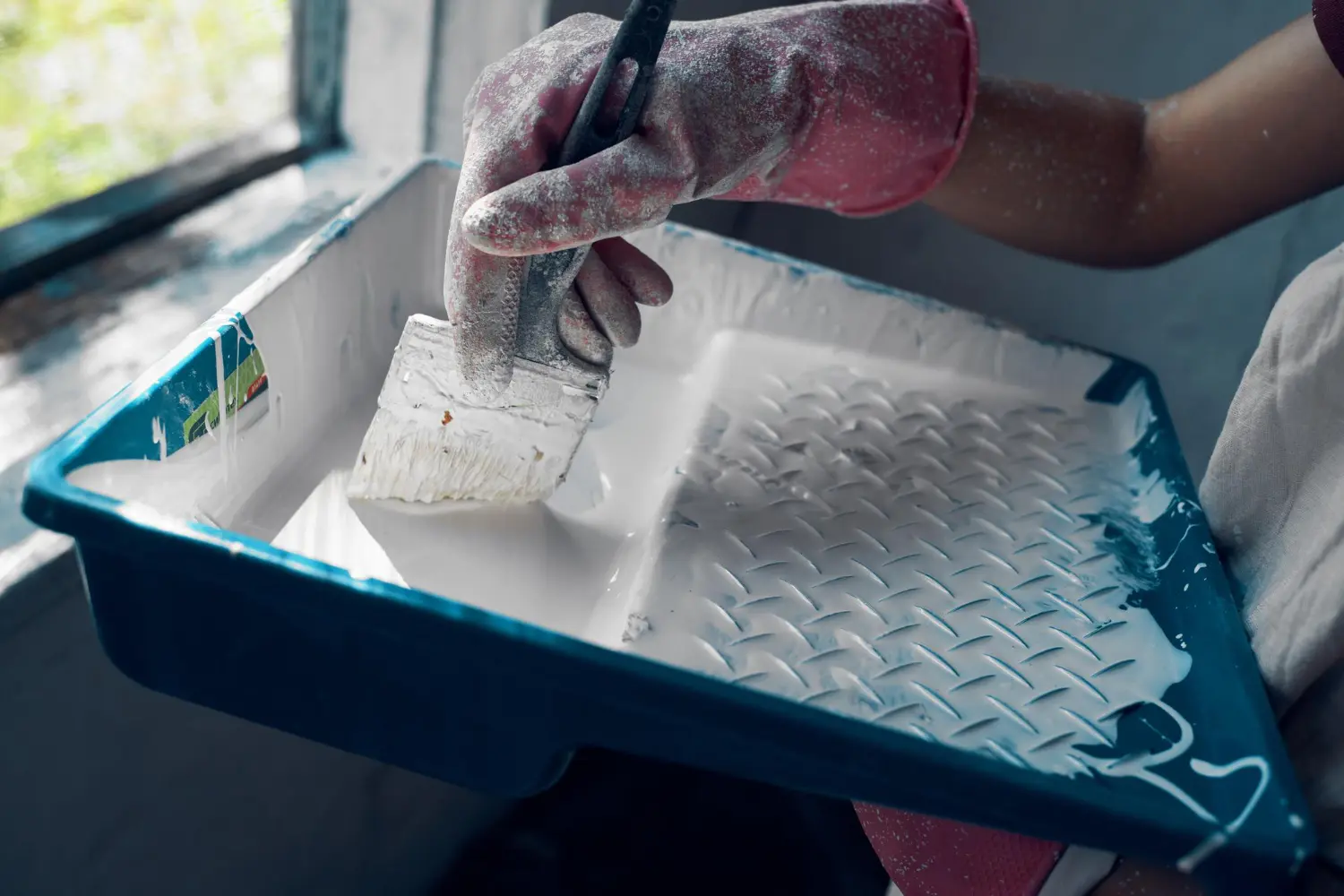How to Paint a Feature-Framing Circle

It’s hard to believe that something as simple as a circle really can make the most eye-catching frame. Perfect for enhancing just about any feature or accessory you can think of, a strategically-positioned circle can transform the visual dynamic of the entire room.
The only problem being that drawing (or painting) a perfect circle isn’t what you’d call easy. In fact, drawing a truly perfect circle of any kind is technically impossible.
On the plus side, painting a feature-framing circle that’s as close as possible to perfect is quite simple. And given that nobody’s going to be checking things at a microscopic level, this is as good as it needs to be.

Best of all, you won’t be needing any specialist equipment to get the job done. You’ll probably find most of the stuff you need lying around your home. So if you’ve been looking for a quick and easy way to enhance any of your interior spaces, here’s how to bring a room to life with a feature-framing circle:
-
Choose the Right Wall
First and foremost, it’s worth bearing in mind how a feature-framing circle can and will accentuate any existing imperfections. Hence, you need to be strategic with its positioning. Ideally, a feature-framing circle should be painted on a surface that’s more or less flawless. If not, you’ll have to carry out the necessary repairs, before going any further.
-
Clean the Wall Thoroughly
As with all interior painting jobs, the process begins with intensive cleaning. Ensure that all dirt, grease and debris are removed from the wall, using a mild detergent mixed with warm water. Give the surface plenty of time to dry, particularly if dealing with a porous wall that may absorb a fair amount of the moisture.
-
Assemble Your Supplies
In order to draw a reasonably accurate circle on the wall, you’re going to need a pair of scissors, a pencil, a pin, some measuring tape and a length of string.
-
Measure the Feature-framing Circle
Carefully consider how large you want the circle to be. Using the measuring tape, measure the circumference of the circle you intend to create, using this measurement to cut a piece of string exactly half its length. Create a small loop at one end of the string, which you’ll be using to hold your pencil shortly.
-
Draw the Circle
Use the pin to stick one end of the string to the wall at the center of where you wish to position the circle. After which, it’s simply a case of pulling the string taut and using the pencil to draw a smooth circle on the wall. Take your time and don’t worry too much about any mistakes you make along the way – they’re easy enough to correct.
-
Paint the Outline of the Circle
The most precise part of the job is painting the initial border inside the circle. Take as much time as necessary to get the job done as accurately as possible, as the rest of the painting process will be a piece of cake. Proceed as slowly as you need to, using a relatively small brush and doing your best not to go over the line you drew. If you do, try to remove the excess paint before it dries, which is far easier than leaving things to be fixed later.
-
Paint the Rest of the Circle
When you’re happy with the outline, you can then move on to painting the rest of the circle. Use circular strokes if working with a brush, or paint the interior of the circle using a roller if you prefer. Once again, take your time and be sure to apply a thin and even coat, in order to avoid drips and general unevenness.
-
Apply a Second Coat
You’ll almost always need to apply a second coat, ensuring you give the initial coat plenty of time to dry. Depending on the surface and the type of paint you choose to use, it may be necessary to apply a third coat.
It’s up to you whether you add any further decorative touches to your circle, but leaving things plain can be just as effective. Experiment with different sizes and you’ll find thousands of perfect places for feature-framing circles, all around the home!
For more information on any aspect of interior painting, contact the team at Homm CPS today.










